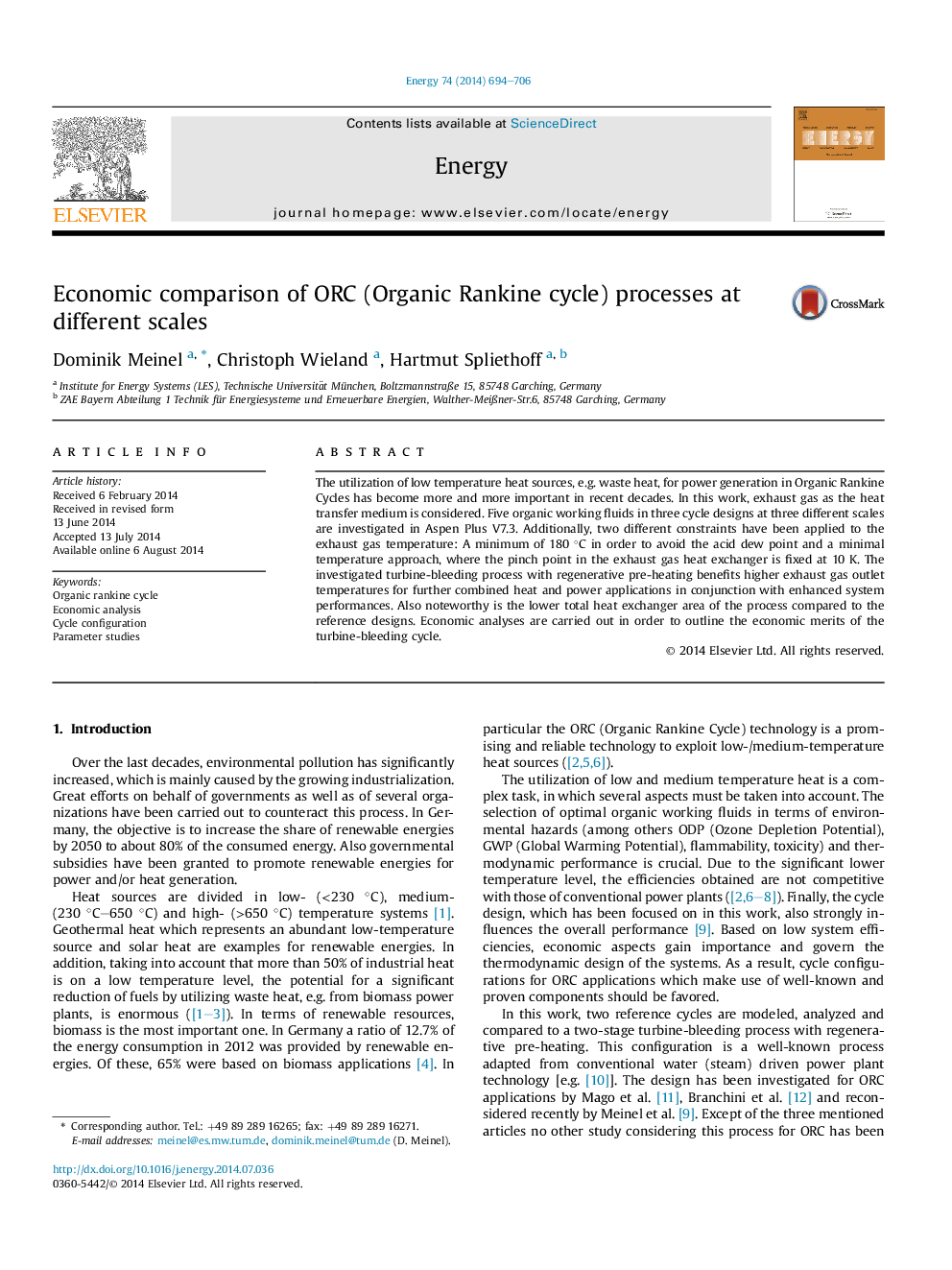| Article ID | Journal | Published Year | Pages | File Type |
|---|---|---|---|---|
| 1732502 | Energy | 2014 | 13 Pages |
•State-of-the-art ORC (Organic Rankine Cycle) processes are compared to a regenerative pre-heating design.•A comparison of the thermodynamic performances of the cycles is carried out.•An economic analysis is shown for different heat source scales and working fluids.•Thermodynamic and economic benefits of the regenerative design are outlined.
The utilization of low temperature heat sources, e.g. waste heat, for power generation in Organic Rankine Cycles has become more and more important in recent decades. In this work, exhaust gas as the heat transfer medium is considered. Five organic working fluids in three cycle designs at three different scales are investigated in Aspen Plus V7.3. Additionally, two different constraints have been applied to the exhaust gas temperature: A minimum of 180 °C in order to avoid the acid dew point and a minimal temperature approach, where the pinch point in the exhaust gas heat exchanger is fixed at 10 K. The investigated turbine-bleeding process with regenerative pre-heating benefits higher exhaust gas outlet temperatures for further combined heat and power applications in conjunction with enhanced system performances. Also noteworthy is the lower total heat exchanger area of the process compared to the reference designs. Economic analyses are carried out in order to outline the economic merits of the turbine-bleeding cycle.
